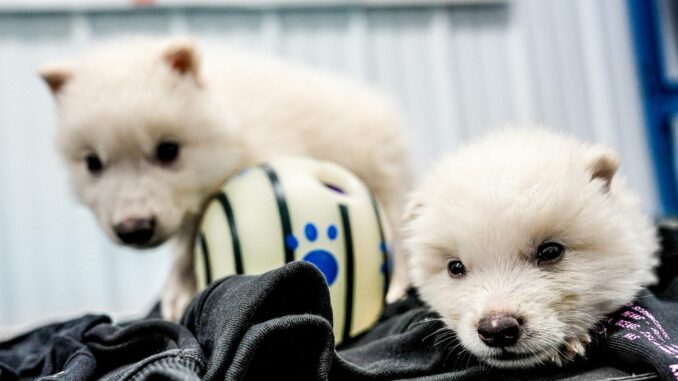
Mary Gilmore, Staff Writer
Colossal Biosciences, U.S.-based company, reported that, “On October 1, 2024, for the first time in human history, Colossal successfully restored a once-eradicated species through the science of de-extinction. After a 10,000+ year absence, our team is proud to return the dire wolf to its rightful place in the ecosystem.” A few weeks ago, the revived species was made known to the public.
Dire wolves are similar to the present day grey wolves but they tend to be larger, more muscular, and more predatorial. The dire wolf is a commonly used animal in fantasy media, especially in HBO’s Game of Thrones.
The company claims that they have genetically modified three wolf pups. Two males, named Remus and Romulus, were born in October and one female, Khaleesi, was born in January.
“This is our first true de-extinction, and it is the first time, you know, the world’s ever had an extinct animal back on the planet. It’s pretty great,” Colossal CEO Ben Lamm stated. “As a Texas company, it’s insane that we were able to do this, and the team did it within eighteen months. This is a good testament to the technologies that are coming. We took a 13,000-year-old to a 73,000-year-old skull and made puppies. It’s pretty magical.”
However, many people seem to disagree with Colossals “magic.” Carl Zimmer, a popular science columnist for the New York Times, doesn’t believe the dire wolf was brought back. He claims the company produced a gray wolf clone with twenty related gene edits and some dire wolf traits. If true then these pups, who may look and act like what people believe were the dire wolves, are grey wolf clones.
Other similar claims have been made, especially that the gene edits only change what the grey wolf looks like and doesn’t actually change the gene sequences to become a dire wolf. Geneticist Pontus Skoglund from the Francis Crick Institute wrote online, “Would a chimpanzee with twenty gene edits be human? Seems optimistically 1/100,000th dire wolf.”
The company has expressed interest in resurrecting the woolly mammoths, the dodo birds, and the Tasmanian tigers. Since then, conversations have been held about the future of resurrected species and how it could impact society. People have also questioned what makes a species a species. Some people are defending the dire wolf, stating that it’s a dire wolf based on looks and behavior. Others disagree as a species must have certain genetics to be a part of that species. The dire wolf went extinct 10,000 years ago, there are very few ways to see the differences between the real dire wolf and the genetically modified version. But since this is an established species and a human-made classification system, the matter is continuously up for debate.
Leave a Reply